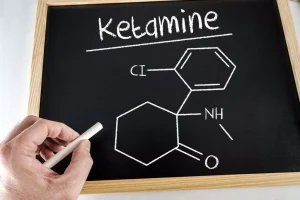Abstinence Violation Effect SpringerLink

Important features common to these groups include low program barriers (e.g., drop-in groups, few rules) and inclusiveness of clients with difficult presentations (Little & Franskoviak, 2010). AA was established in 1935 as a nonprofessional mutual aid group for people who desire abstinence from alcohol, and its 12 Steps became integrated in SUD treatment programs in the 1940s and 1950s with the emergence of the Minnesota Model of treatment (White & Kurtz, 2008). The Minnesota Model involved inpatient SUD treatment incorporating principles of AA, with a mix of professional and peer support staff (many of whom were members of AA), and a requirement that patients attend AA or NA meetings as part of their treatment (Anderson, McGovern, & DuPont, 1999; McElrath, 1997).
- Experts generally recommend that SUD treatment studies report substance use as well as related consequences, and select primary outcomes based on the study sample and goals (Donovan et al., 2012; Kiluk et al., 2019).
- Dr Neighbors has authored more than 120 peer-reviewed scholarly publications, the majority of which have focused on addictive behaviors among young adults.
- A key point in Miller’s theory is that motivation for change is “action-specific”; he argues that no one is “unmotivated,” but that people are motivated to specific actions or goals (Miller, 2006).
- While there is evidence that a subset of individuals who use drugs engage in low-frequency, non-dependent drug use, there is insufficient research on this population to determine the proportion for whom moderation is a feasible treatment goal.
- We summarize historical factors relevant to non-abstinence treatment development to illuminate reasons these approaches are understudied.
- Relapse has been variously defined, depending on theoretical orientation, treatment goals, cultural context, and target substance (Miller, 1996; White, 2007).
Relapse Prevention

Lastly, we review existing models of nonabstinence psychosocial treatment for SUD among adults, with a special focus on interventions for drug use, to identify gaps in the literature and directions for future research. We identify a clear gap in research examining nonabstinence psychosocial treatment for drug use disorders and suggest that increased research attention on these interventions represents the logical next step for the field. A focus on abstinence is pervasive in SUD treatment, defining success in both research and practice, and punitive measures are often imposed on those who do not abstain. Most adults with SUD do not seek treatment because they do not wish to stop using substances, though many also recognize a need for help. This narrative review considers the need for increased research attention on nonabstinence psychosocial treatment of SUD – especially drug use disorders – as a potential way to engage and retain more people in treatment, to engage people in treatment earlier, and to improve treatment effectiveness.
Relapse Prevention And Ongoing Treatment At Bedrock
Additionally, individuals are most likely to achieve the outcomes that are consistent with their goals (i.e., moderation vs. abstinence), based on studies of both controlled drinking and drug use (Adamson, Heather, Morton, & Raistrick, 2010; Booth, Dale, & Ansari, 1984; Lozano et al., 2006; Schippers & Nelissen, 2006). In addition to issues with administrative discharge, abstinence-only treatment may contribute to high rates of individuals not completing SUD treatment. About 26% of all U.S. treatment episodes end by individuals leaving the treatment program prior to treatment completion (SAMHSA, 2019b). Studies which have interviewed participants and staff of SUD treatment centers have cited ambivalence about abstinence as among the top reasons for abstinence violation effect premature treatment termination (Ball, Carroll, Canning-Ball, & Rounsaville, 2006; Palmer, Murphy, Piselli, & Ball, 2009; Wagner, Acier, & Dietlin, 2018). One study found that among those who did not complete an abstinence-based (12-Step) SUD treatment program, ongoing/relapse to substance use was the most frequently-endorsed reason for leaving treatment early (Laudet, Stanick, & Sands, 2009).
A Lapse Vs. A Relapse
There is a possibility that you might rationalize why you might not experience the same consequences if you continue to use. It is inevitable that everyone will experience negative emotions at one point or another. It is not necessarily these natural emotions that cause emotional relapse, but how you cope with them, that does. As a result of stress, high-risk situations, or inborn anxieties, you are experiencing negative emotional responses. Emotional relapses can be incredibly difficult to recognize because they occur so deeply below the surface in your mind. When someone abuses a substance for a long time, they will have a higher tolerance for its effects.
- These properties of the abstinence violation effect also apply to individuals who do not have a goal to abstain, but instead have a goal to restrict their use within certain self-determined limits.
- Little attention was given to whether people in abstinence-focused treatments endorsed abstinence goals themselves, or whether treatment could help reduce substance use and related problems for those who did not desire (or were not ready for) abstinence.
- We want to give recovering addicts the tools to return to the outside world completely substance-free and successful.
- Many would rather keep on drinking rather than come back to a primary source of support in shame.
III.D. Abstinence Violation Effect

A specific process has been described regarding attributions that follow relapse after an extended period of abstinence or moderation. The abstinence violation effect can be defined as a tendency to continue to engage in a prohibited behavior following the violation of a personal goal to abstain. For example, an individual who has successfully abstained from alcohol, after having one beer, may drink an entire case of beer, thinking that since he or she has “fallen off the wagon,” he or she might as well go the whole way. When an abstinence violation occurs, the attributions an individual makes play an important part in determining the trajectory of subsequent use. When abstinence violation occurs, individuals typically enter a state of cognitive dissonance, defined as an aversive experience resulting from the discrepancy created by having two or more simultaneous and inconsistent cognitions.


Most often, relapse tends to be construed as a return to pretreatment levels of occurrence of the targeted behavior. Although there is some debate about the best definitions of lapse and relapse from theoretical and conceptual levels, these definitions should suffice. These properties of the abstinence violation effect also apply to individuals who do not have a goal to abstain, but instead have a goal to restrict their use within certain self-determined limits. The limit violation effect describes what happens when these individuals fail to restrict their use within their predetermined limits and the subsequent effects of this failure. These individuals also experience negative emotions similar to those experienced by the abstinence violators and may also drink more to cope with these negative emotions. In a similar fashion, the nature of these attributions determines whether the violation will lead to full-blown relapse.
- Instead of continuing with recovery, AVE refers to relapsing heavily after a single violation.
- This bias shapes how we recall past events, often causing us to remember the past in a more favorable light.
- There are many relapse prevention models used in substance abuse treatment to counter AVE and give those in recovery important tools and coping skills.
- The RP model has been studied among individuals with both AUD and DUD (especially Cocaine Use Disorder, e.g., Carroll, Rounsaville, & Gawin, 1991); with the largest effect sizes identified in the treatment of AUD (Irvin, Bowers, Dunn, & Wang, 1999).
Emotional Relapse
Marlatt’s work inspired the development of multiple nonabstinence treatment models, including harm reduction psychotherapy (Blume, 2012; Denning, 2000; Tatarsky, 2002). Additionally, while early studies of SUD treatment used abstinence as the single measure of treatment effectiveness, by the late 1980s and early 1990s researchers were increasingly incorporating psychosocial, health, and quality of life measures https://ecosoberhouse.com/article/you-are-not-powerless-over-alcohol-and-heres-why/ (Miller, 1994). This suggests that individuals with non-abstinence goals are retained as well as, if not better than, those working toward abstinence, though additional research is needed to confirm these results and examine the effect of goal-matching on retention. Multiple theories of motivation for behavior change support the importance of self-selection of goals in SUD treatment (Sobell et al., 1992). For example, Bandura, who developed Social Cognitive Theory, posited that perceived choice is key to goal adherence, and that individuals may feel less motivation when goals are imposed by others (Bandura, 1986). Miller, whose seminal work on motivation and readiness for treatment led to multiple widely used measures of SUD treatment readiness and the development of Motivational Interviewing, also argued for the importance of goal choice in treatment (Miller, 1985).
